Geheimnisnacht - A time for wanton destruction
In this dev-blog we will take a closer look at what Geheimnisnacht is and how it manifests itself across the Old World. Geheimnistag, also known as Geheimnisnacht Eve, is a time of mystery and celebration in the Old World. It’s a time to honor the dead – or to fight for your life.
In Vermintide 2, players will experience this unholy festival through new challenges and environments, and only those strong enough will reap the rewards.
An unholy celebration in the Old World
Geheimisnacht is dedicated to Morr, the Imperial God of the Dead. Called “the Floating Holiday”, it occurs not at a fixed date, but when the twin moons Morrslieb and Mannslieb are both full in the night sky. During Geheimnisnacht the veil between worlds grows thin, empowering the Winds of Magic, and prompting the ignorant and the bereaved to perform auguries and seances. But it is also a night when the dead are restless and their spirits hungry, so such communions often end with disastrous and horrifying results.
As the barrier between worlds falters, secret gateways to the Realm of Chaos open. Like great daemonic eyes they unfurl to release minor Daemons and other creatures of the dark. The very air sizzles with evil energy, and citizens of even the safer parts of the world find themselves fighting back nightmarish monsters and possessed beasts.
Elsewhere, immense portals tear through the fabric of reality, allowing thousands of Daemons to freely walk the mortal world for a night of wanton slaughter and destruction.
All over the Empire and in Bretonnia, the restless dead awake to roam the lands of Men. In the cursed woods of Sylvania, necromancers cackle with glee as their spells are amplified and empowered by their patron Morrsleib, and unholy energies rampage unchecked amongst graveyards and long-sealed tombs.
Geheimnisnacht goes by different names in different parts of the Old World. Called Winter’s Eve by the Bretonnians, Twilight’s Tide by the Elves and As’Uzkul by the Dwarfs, everyone faces the dangers and mysteries of Geheimnisnacht differently. But to all, it is a most unholy night.
Far removed from the festivities and ceremonies of the Empire, peasants in the haunted Drakwald and cursed Mousillon take shelter behind sturdy walls of fortified inns, windows and doorways warded with crude spells.
The strongholds of the Dwarfs are sealed by Runesmiths, their massive gates guarded by stoic Ironbreakers and deranged Slayers eager to meet their doom. In Athel Loren the roots and branches of mighty trees grow thicker to form barricades against the many wicked things threatening the elven realms, and in garrisons across Ulthuan holy fires are lit to ward off the evil. With prayers to Isha and Asuryan on their lips, the elves prepare to wait out the long night.
Wizards and magic-wielders of all kinds find themselves painfully and urgently aware of the growing strength of the Winds of Magic, and the terrifying influence of Chaos. Some weather the storm, while others succumb to the dark power surging through them.
Morr
In the Empire of Man, Morr is the God of the Dead, and of dreams and dreamers. He represents illusion and mystery. He stands watch over the souls of the departed, protecting them from Chaos and from necromancers, and guards the dreams of the sleeping from the evil influence of Daemons. The followers of the God of the Dead are known as The Cult of Morr. Their eternal war, and that of Morr himself, is against the Undead, and the wicked necromancers who seek to use the souls and flesh of the departed to do their bidding.
Lohner might have taken inspiration from The Cult of Morr as he decorated the keep. Who knows? If you wish to read more about Geheimnisnacht in Vermintide 2, you can find it here.





